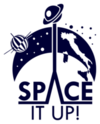Spoke 8 activities overview
Spoke 8 - Robotic and Human Exploration of Extraterrestrial Habitats, Architectures and Infrastructures
Spoke 8 develops technologies, mission concepts and experimental tools to enable a sustainable and long-term human and robotic presence beyond Earth. Its activities span sensors and instrumentation for planetary exploration, advanced robotic systems, mission design for human spaceflight, infrastructure concepts for extraterrestrial bases and experimental research to validate technologies in representative environments.
A first line of work concerns new technologies for on-orbit and surface observation, where miniaturized sensors and instruments are designed to analyse the surface, subsurface and atmosphere of bodies such as the Moon and Mars, with emphasis on mineral dust, water ice and CO₂. This includes the development of Ground Penetrating Radar concepts, optical-fiber sensing, lab-on-chip devices, spectrometric sensors and deployable systems based on smart materials. Research also extends to modelling light-scattering properties of cosmic dust and studying prebiotic chemistry. These sensing technologies are complemented by TRL assessment strategies that define paths towards space qualification.
A second area focuses on robotic systems and associated technologies, including the study, development and prototyping of rovers, micro-rovers, drones, robotic arms, drilling systems and deployable mechanisms. The work encompasses navigation and autonomous control, communication architectures for small platforms, cooperative exploration concepts, GNC support, and human–robot interfaces. Contributions include powertrain development for a pressurized lunar rover, path-planning algorithms, inflatable robotic systems for in-orbit operations, and robotic technologies for resource extraction. Mission scenarios for swarms of micro-rovers and the simulation of dust environments on Moon and Mars also support these developments.
Building on these advances, the Spoke designs mission architectures and smart robotic probes for preparatory or support missions aimed at human exploration of the Moon and Mars. Activities include defining payload configurations, analysing mission scenarios, developing miniaturized sensor suites, and studying swarm architectures adaptable to planets with or without atmosphere. Work also addresses mobility and reconfiguration strategies, as well as radiation-tolerant microelectronic components required for autonomous systems operating in harsh environments.
The Spoke also develops methods, tools and concepts for human exploration missions. A multidisciplinary framework supports the design of space habitats, robotic systems and pressurized rovers, integrating modelling, requirements derivation, trade-off analysis and functional analysis. Activities include mission analysis, operational concepts, definition of user-support tools, technology roadmaps and systems budgets. The work investigates active and passive shielding solutions, advanced joining technologies, AM/ISRU processes, and real-time operating-system support for dependable space software. Additional work explores crew-centred tools for logistics, training and operations, and Earth-based support for future exploration missions.
A complementary effort concerns the design of infrastructures for sustainable space architectures, including space-access systems, surface mobility and EDL technologies, such as spacecraft, landers, tugs, rovers and descent systems. Other activities address human factors, analysing psychological, muscular, cardiovascular and workload aspects through biometric and subjective measurements. The design of habitable infrastructures—crew stations, habitats, logistic modules and lunar bases—is supported by digital modelling and the use of extraterrestrial resources. Parallel work addresses communication and navigation systems for the Moon and Mars, GNSS-like architectures, lunar communication networks and cooperative positioning for robotic and human missions.
Spoke 8 also develops enabling technologies for extraterrestrial habitats, including advanced materials, meta-materials, regenerative technologies, zero-waste manufacturing processes and energy-harvesting systems. Radiation protection, thermal protection, micrometeorite shielding, dust-mitigation strategies and UV-based sterilization systems are central elements of the research. In parallel, inflatable and deployable modules for orbital and surface use are studied, together with their joining materials, repair strategies and surface treatments. Activities also explore human-centred systems such as wearable dosimeters, embedded sensing in EVA suits and smart habitat technologies for environmental monitoring and damage assessment.
Finally, the Spoke conducts extensive experimental research for advanced space exploration. This includes the setup of dedicated laboratory environments, acquisition of state-of-the-art equipment, and definition of qualification protocols for technologies reaching TRL>5. Prototyping and testing are conducted in Moon/Mars analogues and simulation chambers, including prototyping of sensors, robotic systems, protection systems and deployable structures. Full-motion simulators and volcanic-data-based scenario generators help reproduce extraterrestrial environments. Activities include material testing, development of experimental setups for dust and regolith studies, thermal-management systems, distributed sensor arrays, and validation of robotic mining technologies. Advanced data-analysis techniques support result interpretation, TRL verification and performance assessment.
Across all tasks, the Spoke advances observation, mobility, habitation, protection and operational capabilities essential for safe and sustainable exploration of the Moon, Mars and other destinations, while ensuring that each technology progresses along a clearly defined TRL roadmap.
Keyword Cloud of Spoke Activities




